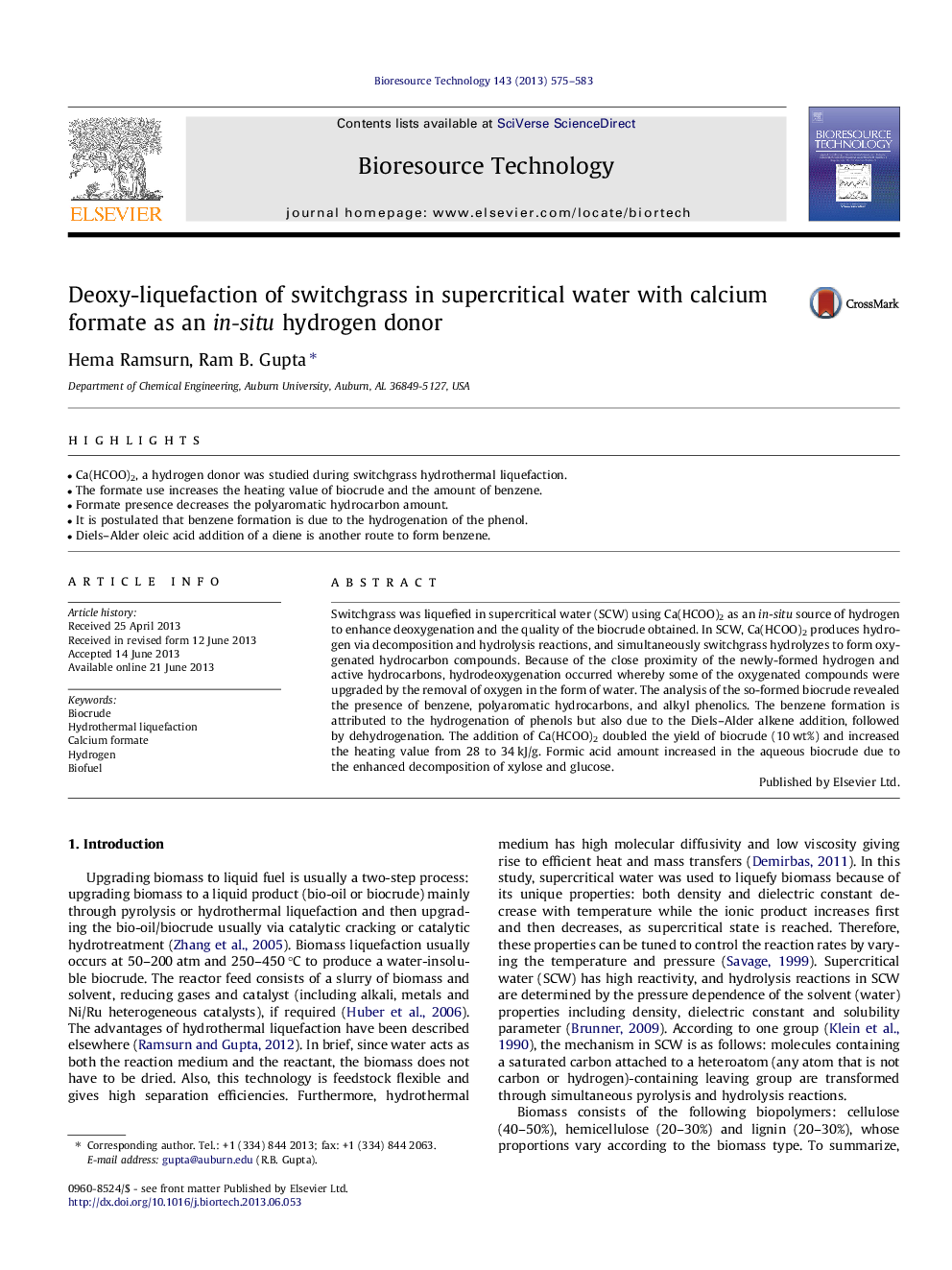| Article ID | Journal | Published Year | Pages | File Type |
|---|---|---|---|---|
| 7081903 | Bioresource Technology | 2013 | 9 Pages |
Abstract
Switchgrass was liquefied in supercritical water (SCW) using Ca(HCOO)2 as an in-situ source of hydrogen to enhance deoxygenation and the quality of the biocrude obtained. In SCW, Ca(HCOO)2 produces hydrogen via decomposition and hydrolysis reactions, and simultaneously switchgrass hydrolyzes to form oxygenated hydrocarbon compounds. Because of the close proximity of the newly-formed hydrogen and active hydrocarbons, hydrodeoxygenation occurred whereby some of the oxygenated compounds were upgraded by the removal of oxygen in the form of water. The analysis of the so-formed biocrude revealed the presence of benzene, polyaromatic hydrocarbons, and alkyl phenolics. The benzene formation is attributed to the hydrogenation of phenols but also due to the Diels-Alder alkene addition, followed by dehydrogenation. The addition of Ca(HCOO)2 doubled the yield of biocrude (10Â wt%) and increased the heating value from 28 to 34Â kJ/g. Formic acid amount increased in the aqueous biocrude due to the enhanced decomposition of xylose and glucose.
Related Topics
Physical Sciences and Engineering
Chemical Engineering
Process Chemistry and Technology
Authors
Hema Ramsurn, Ram B. Gupta,
